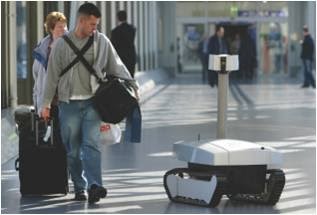ENABLING THE ORGANIZATION - DECISION MAKING
In this chapter, we learned about :
- Define the systems organizations use to make decisions and gain competitive advantages
- Describe the three quantitative models typically used by decision support systems
- Describe the relationship between digital dashboards and executive information systems
- List and describe four types of artificial intelligence systems
- Describe three types of data-mining analysis capabilities
DECISION MAKING
- Reasons for the growth of decision-making information systems
- People need to analyze large amounts of information
- People must make decisions quickly
- People must apply sophisticated analysis techniques, such as modelling and forecasting, to make good decisions
- People must protect the corporate asset of organizational information
- Model - A simplified representation or abstraction of reality
- IT systems in an enterprise
TRANSACTION PROCESSING SYSTEMS
- Moving up through the organizational pyramid users move from requiring transactional information to analytical information
- Transaction processing system - The basic business system that serves the operational level (analysts) in an organization
- Online transaction processing (OLTP) - The capturing of transaction and event information using technology to (1) process the information according to defined business rules, (2) store the information, (3) update existing information to reflect the new information
- Online analytical processing (OLAP) - The manipulation of information to create business intelligent in support of strategic decision making
DECISION SUPPORT SYSTEMS
- Decision support system (DSS) - Models information to support managers and business professionals during the decision-making process
- Three quantitative models used by DSSs include :
- Sensitivity analysis - The study of the impact that changes in one (or more) parts of the model have on other parts of the model
- What-if analysis - Checks the impact of a change in an assumption on the proposed solution
- Goal-seeking analysis - Finds the inputs necessary to achieve a goal such as a desired level of output
- What-if analysis
- Goal-seeking analysis
- Interaction between a TPS and a DSS
EXECUTIVE INFORMATION SYSTEMS
- Executive information system (EIS) - A specialized DSS that supports senior level executives within the organization
- Most EISs offering the following capabilities :
- Consolidation - Involves the aggregation of information and features simple roll-ups to complex grouping of interrelated information
- Drill-down - Enables users to get details, and details of details, of information
- Slice-and-dice - Looks at information from different perspectives
- Interaction between a TPS and an EIS
- Digital dashboard - Integrates information from multiple components and presents it in a unified display
ARTIFICIAL INTELLIGENCE (AI)
- Intelligent system - Various commercial applications of artificial intelligence
- Artificial intelligence (AI) - Stimulates human intelligence such as the ability to reason and learn
- Advantages : Can check info on competitor
- The ultimate goal of AI is the ability to build a system that can mimic human intelligence
- Four most common categories of AI include :
- Expert system - Computerized advisory programs that imitate the reasoning processes of experts in solving difficult problems
- Neural network - Attempts to emulate the way the human brain works
- Fuzzy logic - A mathematical method of handling imprecise or subjective information
- Genetic algorithm - An artificial intelligent system that mimics the evolutionary, survival-of-the-fitters process to generate increasingly better solutions to a problem
- Intelligent agent - Special-purposed knowledge - based information system that accomplishes specific tasks on behalf of its users
- Multi-agent systems
- Agent-based modelling
DATA MINING
- Data-mining software includes many forms of AI such as neural networks and expert systems
- Common forms of data-mining analysis capabilities include :
- Cluster analysis
- Association detection
- Statistical analysis
CLUSTER ANALYSIS
- Cluster analysis - A technique used to divide an information set into mutually exclusive groups such that the members of each group are as close together as possible to one another and the different groups are as far apart as possible
- CRM systems depend on cluster analysis to segment customer information and identify behavorial traits
ASSOCIATION DETECTION
- Association detection - Reveals the degree to which variables are related and the nature and frequency of these relationships in the information
- Market basket analysis - Analyzes such items as Websites and checkout scanner information to detect customers' buying behavior and predict future behavior by identifying affinities among customers choices of products and services
STATISTICAL ANALYSIS
- Statistical analysis - Performs such functions as information correlations, distributions, calculations, and variance analysis
- Forecast - Predictions made on the basis of time-series information
- Time-series information - Time-stamed information collected at a particular frequency








.jpg)
.jpg)
.jpg)

No comments:
Post a Comment